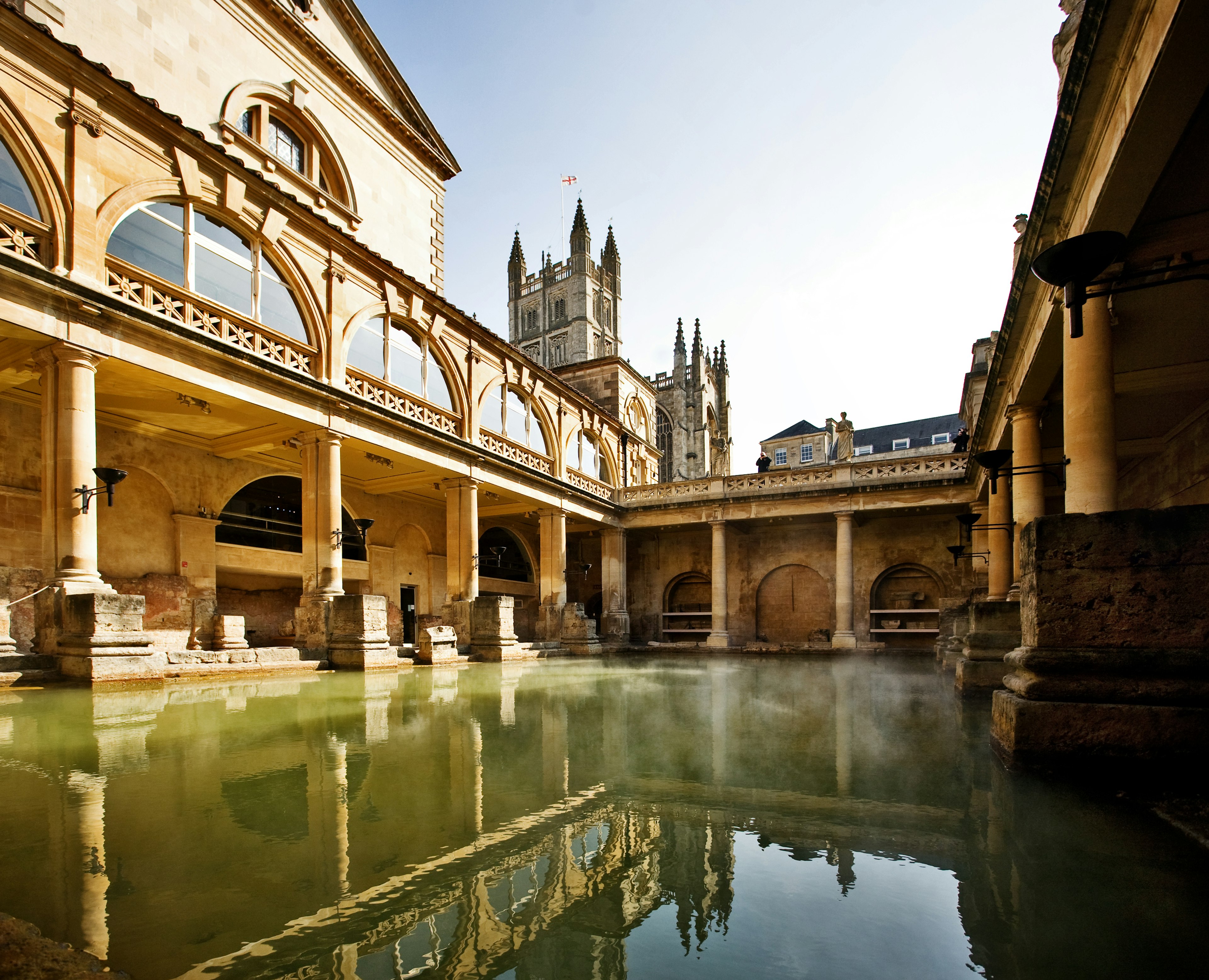London may be a world unto itself, but when you're ready to escape the city streets, taking a day trip from the capital is the perfect way to explore the town, historic sites and coastline on its doorstep.
Many famous UK attractions are just a short train ride away from London. Day trips by car are possible, but heavy traffic and parking restrictions for some places mean that train travel is the best option.
1. Solve the mystery of Stonehenge
Travel time: 1 hour, 30 minutes
Stonehenge is like an amazing magic trick: delightfully mind-boggling, but you don’t really want to know how it happened. Which is convenient, because no one’s fully figured it out yet. Here’s what we do know: it’s a massive, prehistoric stone circle, believed to have been constructed around 5000 years ago, making it older than the Pyramids of Giza. The largest stones weigh 25 tons and stand 9m (30ft) tall.
Although you can’t touch the stones (to protect them from erosion), you can stroll around them on paths. The visitor center has an interactive presentation that allows you to sit among the stones as the seasons change. If you have your own transport, you could drive north to Avebury, home to another famous stone circle – and these you can touch.
How to get to Stonehenge from London: Trains from London Waterloo to Salisbury depart twice an hour, taking 90 minutes. From Salisbury, hop on the Stonehenge Tour Bus, which takes you directly to the monument. Alternatively, it's about a 90-minute drive from central London (traffic depending), and parking is available at the site.
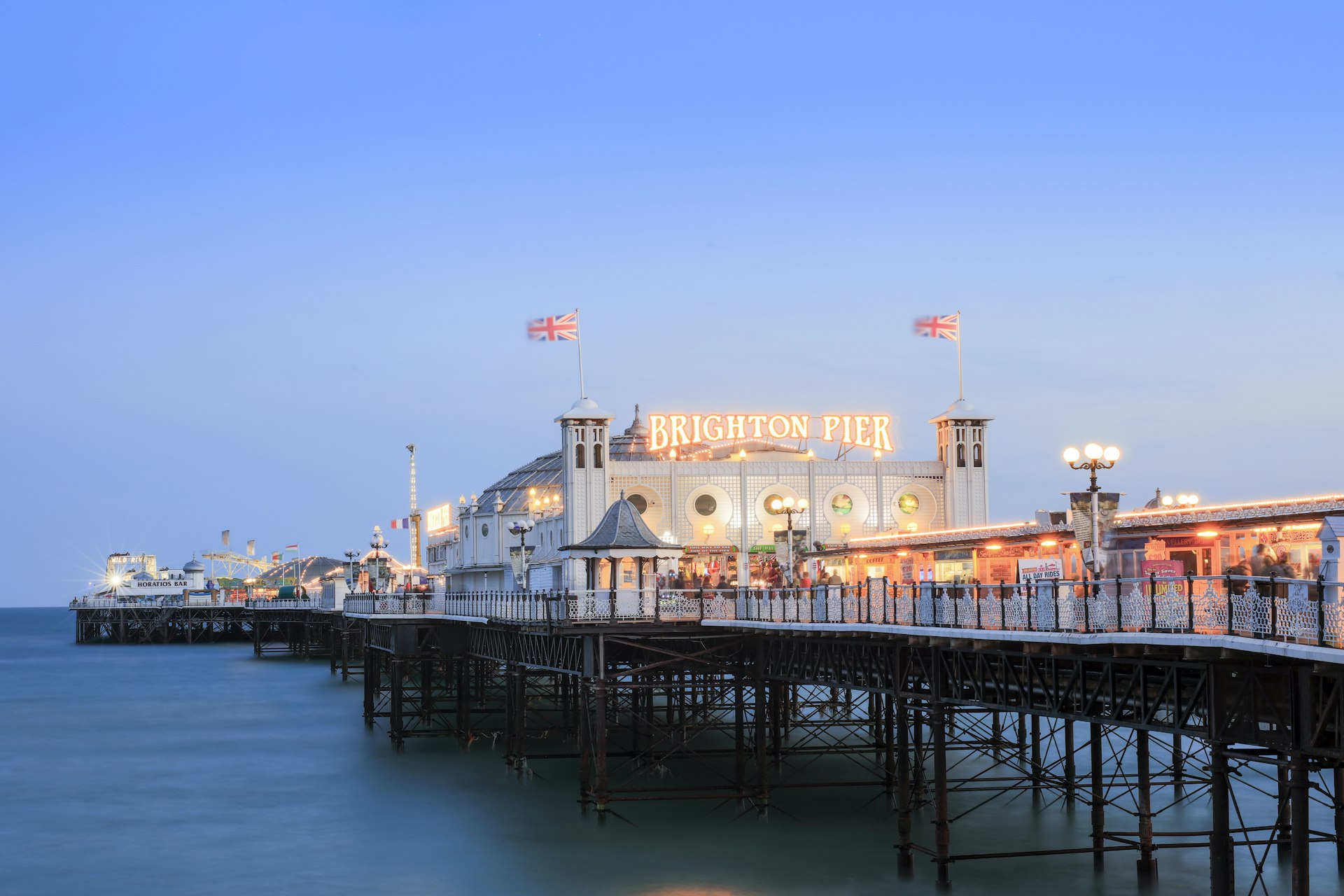
2. Soak up Brighton's indie attitude
Travel time: 1 hour
Stuffed with originality and independent businesses, Brighton is often referred to as London-on-Sea, though that’s more a nod to property prices than a reference to its character. This city has a personality all its own – grungy, creative and bohemian – and is considered one of the UK's top LGBTQIA+ spots.
Start in the North Laine neighborhood, packed with pubs, cafes and theaters, before going shopping in The Lanes a little farther south. Look out for the eccentric Royal Pavilion – built by King George IV in 1787 as a seaside retreat – and take a walk along the pier, checking out the amusements. Brighton has a fantastic array of bars and restaurants. Food for Friends offers excellent vegan dishes and is a great spot for lunch, while the Walrus pub is a good place to grab a beer.
How to get to Brighton from London: Get on one of the frequent direct trains from London Victoria or London Bridge. The journey time is about an hour. It takes about two hours to drive from London to Brighton, and parking can be difficult, so the train is generally a better option.
15 of the best things to do in Brighton
3. Bath has England's most beautiful Roman ruins
Travel time: 1 hour, 30 minutes
Bath is arguably Britain’s most beautiful city. Founded by the Romans, who used the area’s thermal springs to create a spa retreat, it’s now the premier tourist attraction of southwest England. It’s also celebrated for its magnificent Georgian architecture, with grand squares and crescents defining the city.
Start at the beginning with the Roman Baths complex, which is divided into four main parts: the Bath House, the Sacred Spring, the Roman Temple and the museum, which displays fascinating finds from the ruins. Next, have a wander around Bath Abbey, a huge medieval church that you can climb to the top of. The Marlborough Tavern gastropub serves seriously impressive, substantial dishes.
If you have time, it's worth staying in Bath for the weekend. Wander the streets, enjoy the architecture, including two of the city’s Georgian masterpieces – Pulteney Bridge and the Royal Crescent – and take time to relax in Thermae Bath Spa.
How to get to Bath from London: Direct trains travel from London Paddington twice an hour, and the journey time is about 1 hour 30 minutes. Driving takes around 2.5 hours, but traffic around the city is often heavy, and parking is limited.
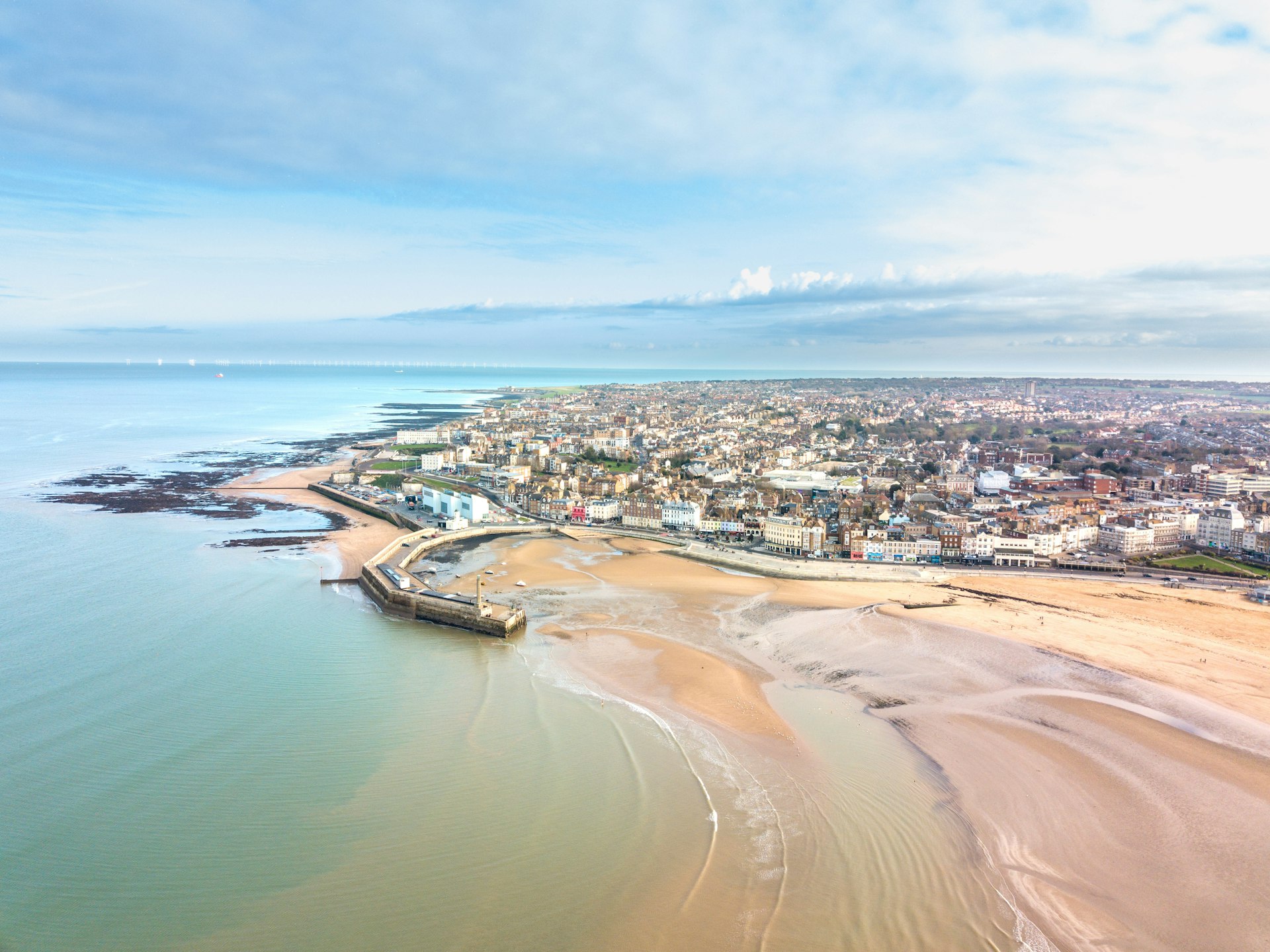
4. Find art and amusement parks in Margate
Travel time: 1 hour, 30 minutes
Its long curve of golden sand made Margate a top seaside destination for the Victorians, but it fell out of favor in the late 20th century. Recent investment has brought many day-trippers back to enjoy its retro charm. Leading the way with this regeneration is art gallery Turner Contemporary, one of the top attractions in the area, which showcases world-class art exhibits with superb views of the harbor and beyond. The skies here were celebrated by painter JMW Turner, and you should linger at the gallery to enjoy the light out on the sea.
If you like your day to be sprinkled with a bit of mystery, then you'll want to book a ticket to tour the Shell Grotto. This quirky little underground spot, discovered in 1835, is packed with millions of shells creating mosaics and patterns over the walls – and no one quite knows why. Dreamland is the town's famous amusement park and a great day out with the family with many different classic rides. Once you've got your fill of the windswept beach, artworks and rides, warm up with a hot chocolate at one of the independent cafes in the rejuvenated old town before browsing or buying in the many vintage stores.
How to get to Margate from London: Trains run to Margate station, right on the beach, from London St Pancras (1 hour 30 minutes) and Victoria (1 hour 45 minutes). It takes around two hours to drive from London to Margate, and you should expect to pay upwards of £10 to park all day in town.
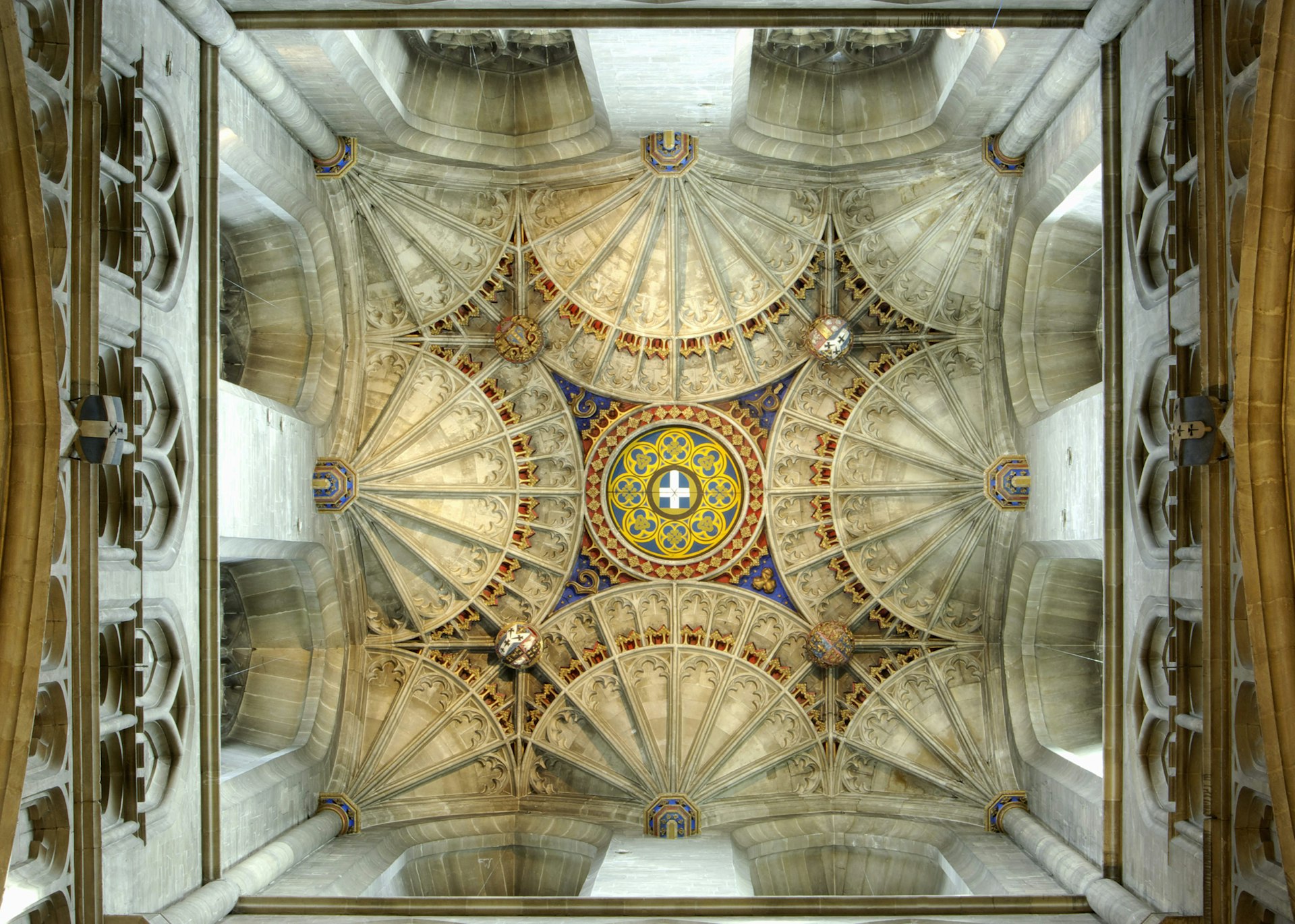
5. Get to church in Canterbury
Travel time: 1 hour
Canterbury is one of England’s most attractive and important cathedral cities, with its star building considered one of the finest in Europe. The town itself is absurdly quaint, with narrow alleyways following the original medieval street plan and the River Stour idling past Tudor facades.
Visiting Canterbury Cathedral, a Unesco World Heritage Site, is an absolute must. As the seat of the Archbishop of Canterbury, leader of the Church of England, it's the most important Christian site in the country. Just outside, you can see the ruins of the 6th-century St Augustine’s Abbey.
Other highlights include the Beaney House of Art and Knowledge and boating trips on the River Stour. On these peaceful jaunts in a flat-bottomed punt, knowledgeable guides share stories of the city as they expertly navigate the boat under bridges with barely any headroom. For a traditional English tearoom experience, visit Tiny Tim’s Tearoom.
How to get to Canterbury from London: Fast trains from London St Pancras depart once an hour and take one hour. Slower trains (1 hour 30 minutes) run from London Victoria and London Charing Cross. The drive takes around 1 hour 30 minutes.
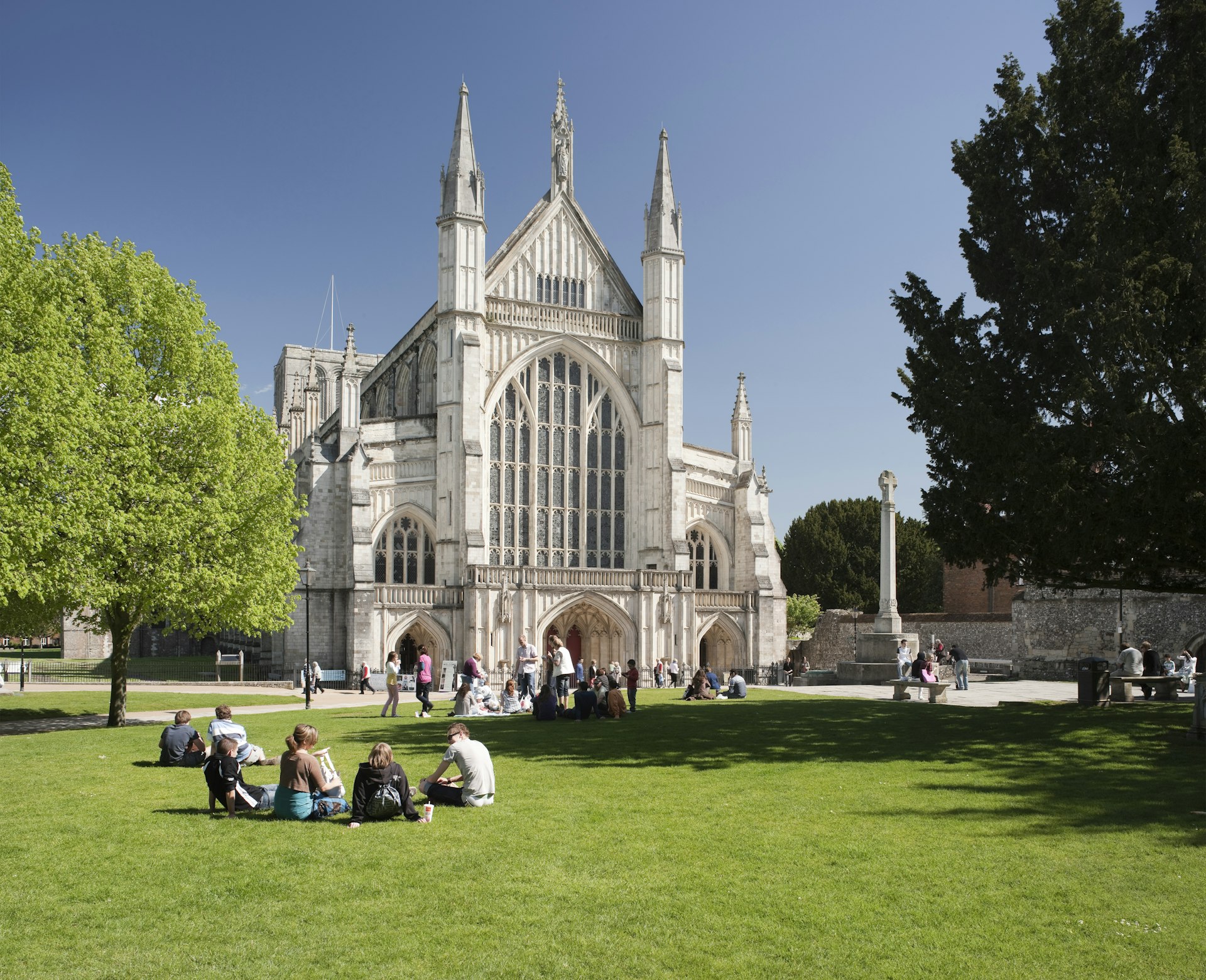
6. Step back in time in Winchester
Travel time: 1 hour
Technically a city on account of its fabulous cathedral, Winchester has the feel of a friendly small town. Winchester was England’s capital about 1000 years ago and the home of King Alfred the Great, and today it boasts a variety of excellent pubs, countryside walks and a lively high street.
At the top of the high street is an imitation of King Arthur’s Round Table hanging in the Great Hall. Just off the high street through a short alleyway is Winchester Cathedral, a stunning building with the longest nave of any Gothic cathedral in Europe. Back on the high street, head past the statue of Alfred the Great to the River Itchen – follow it to get to Winchester College.
How to get to Winchester from London: Trains leave London Waterloo several times an hour, and the journey time is about an hour. The drive from central London takes around 1 hour 30 minutes, and Winchester's city center has several parking options.
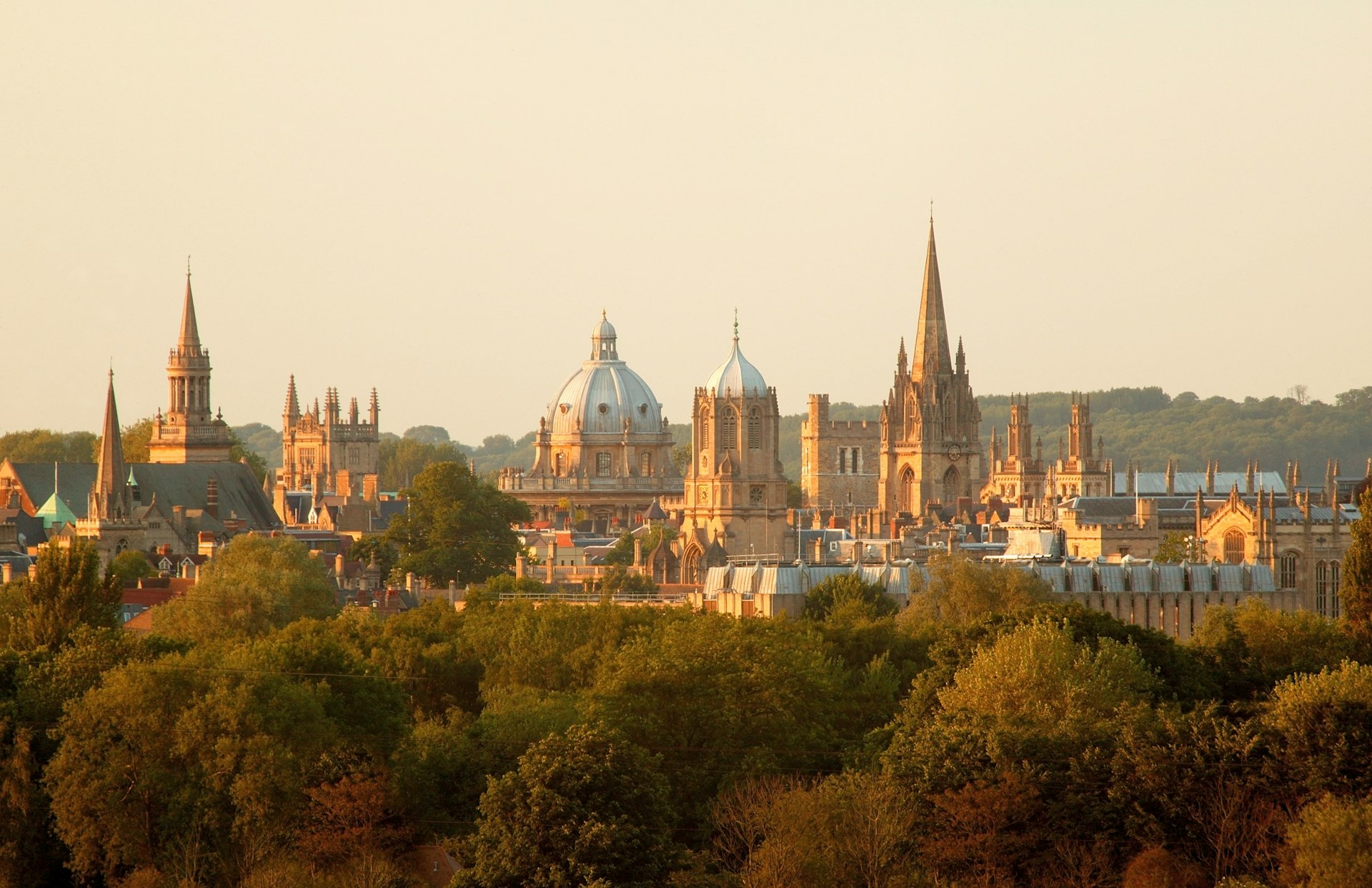
7. Harry Potter fans should take a day trip to Oxford
Travel time: 1 hour
Best known for its world-famous university and forest of ochre spires, Oxford is a grand old place, steeped in privilege and prestige. The large student population keeps the atmosphere young and fresh, though there’s no shortage of history if you want it. Highlights include several museums, punting along the River Isis and the 30 colleges that make up the university – the most famous of which are Christ Church and Magdalen. You could easily spend more than a day in Oxford.
A tour of the university colleges is a must – Harry Potter fans will recognize various locations used in the movies. Blenheim Palace, a monumental residence and the birthplace of Winston Churchill, is a short bus ride or drive from the city.
How to get to Oxford from London: Trains from London Marylebone and London Paddington to Oxford run several times an hour, and the journey time is about an hour. You can also take a coach, called the Oxford Tube, from several locations in London. Driving time is around two hours.
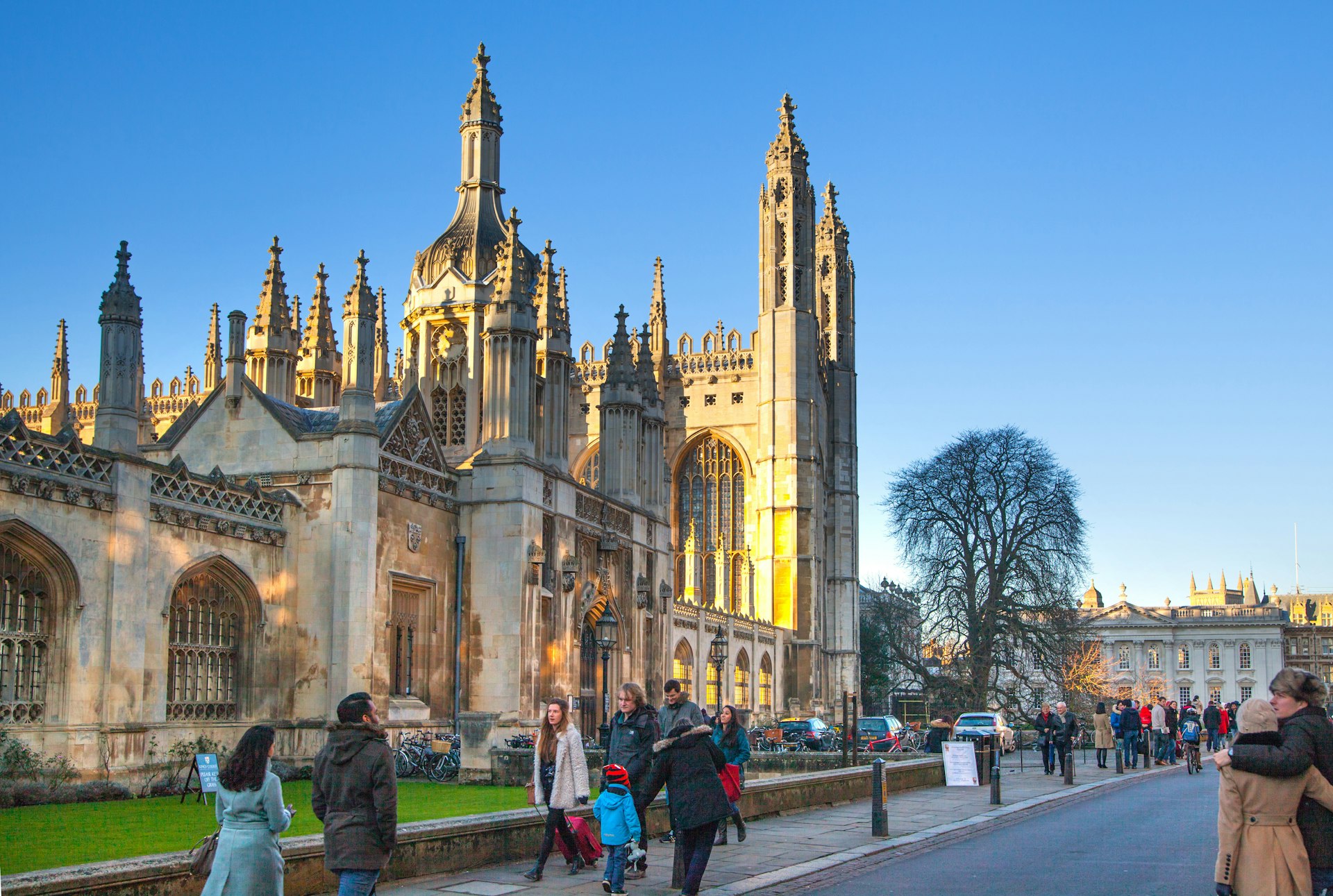
8. Head to college in Cambridge
Travel time: 45 minutes
With its world-class university, clutch of ancient colleges and love for punting, Cambridge shares many similarities with its Oxfordshire counterpart. But with more green space and less traffic, this city is a more tranquil affair. A walking tour of the university is a must, but don’t ignore the town itself – there’s plenty going on there.
The university colleges are the highlight, with Corpus Christi, Clare College, King's College and Christ’s College being the most popular. Once you’ve had your fill of academia, a punting trip along the River Cam is a lovely way to see the city. On a summer’s day, a picnic on the Backs is highly enjoyable.
How to get to Cambridge from London: Trains from London Kings Cross run several times an hour, with a journey time of about 45 minutes. It takes about 90 minutes to drive to Cambridge from central London.

9. Take a royal day trip to Windsor
Travel time: 1 hour
Most people who visit Windsor do so to see Windsor Castle, the location for many a royal wedding and the place where the Queen spends much of her time. Along with its towers and beautiful chapels, you can also see the Changing of the Guard.
The best way to appreciate the full majesty of Windsor Castle is to approach via the aptly named Long Walk. This arrow-straight road cuts through Windsor Great Park – there are no cars, but you might see some deer. The castle could keep you busy for days, but must-sees include Queen Mary’s Dolls' House, the Albert Memorial Chapel and the State Apartments. Across the river, Eton is a pretty little town that's quieter than Windsor and worth a stroll.
How to get to Windsor from London: Trains run from London Waterloo twice an hour, taking about an hour. It's around a 45-minute drive, and there are parking lots near the town center.

10. Head into nature in the New Forest
Travel time: 1 hour, 30 minutes
Designated a national park in 2005, the New Forest dates from 1079, so it's anything but new – and not even really a forest. It's home to free-roaming animals, including pigs, cattle and the eponymous ponies, and it's made up of woodland, bog, marshland, heathland and coast, with many quaint villages in between. You can easily spend more than a day in the New Forest, and while there are fantastic cycle routes and hiking trails, to make the most of the region as a whole, it's best to explore by car.
If you're in the New Forest for just the day, focus your attention on one activity, whether that's visiting a historic site, such as Buckler's Hard, Hurst Castle or Beaulieu, or following a walking trail where you'll be drawn in by the beautiful colors of the landscapes. Many people come to the area simply to dine at The Pig in Brockenhurst, which celebrates home-grown and local produce (book well in advance).
How to get to the New Forest from London: The region is slightly under a two-hour drive from central London. If traveling by train (1 hour 30 minutes from London Waterloo to Brockenhurst), consider renting bikes and following trails that take you beyond the town.

